Behind the Scenes of "The Spirit of Super Mario Galaxy"
👋🏻
Hiya readers. For those that are not aware, after each essay, I write a huge Behind the Scenes article that explores the creative process and the lessons I learned this go around. It's posted on my blog, but it felt like the kind of writing that you all signed up for. It's quite long.
If you like the idea of me sending it out this way too, I'll keep it up going forward. If this is far too long of a newsletter for you, I totally get it. Let me know by replying to this email.
I hope you enjoy.
The Spirit of Super Mario Galaxy was finally released and it served as a marker for quite a few "YouTuber Essayist" milestones. This one has been the pilot essay for my newsletter Memory Card, which is designed for chronicling my creative process for making The Thing™ (aka said video essays). It serves as the launch star for my video-essay-only channel. I tried many new techniques and ideas throughout its entire creation, all of which I hope to reflect on in this here Behind the Scenes.
This was a bigger deal (to me) than I ever intended, which is usually how making something goes. I am pleasantly surprised by this revelation after the video's release.
I have lots to talk about below, but before I go any further, I want to say "thank you" to you the watcher/reader of all of this. It means quite a bit to have you here, reading these thousands of words or watching my analyses of the Venn Diagram that is video games, emotions, and me.
Now let's dig into just how I went about defining "spirit."
Timeline
Before the timeline, I am kinda of thinking about dropping this section going forward. Honestly, I am not very good at logging key moments and dates. That makes the timeline jumpy. Also, I feel like [[Memory Card]] sort of serves as a new de facto chronicling timeline of each essay. That makes the idea of dropping this all the more appealing.
- 9/23/24 - Essay wise, this is 2D while the rest is 3D. Super Mario 3D Land/World is a unique fusion of 2D/3D. Remember the focus is Splatoon 3 and the spirit of a galaxy game. Don’t get caught too in the weeds on the 3D Mario games Galaxy and beyond.
- 9/25/24 - Javed's new video The Question No One Asks Shigeru Miyamoto has a rich dive into interviews. What can interviews reveal about the spirit of a Galaxy game?
"The end result of this dense research is a video packed with quotes and research papers. I figured the more I can get others talking for me, the more confident I can be about my thesis. You’ll find that this video contains no opinions, but is a mass delivery on what is pretty close to every mention and discussion on the subject."
https://goodblood.games/thequestionnooneasksmiyamoto
-
Where does opinion and source blur together? Is "spirit" definable?
- From Wiz - Essence is often used in place of "spirit" when these interviews are translated
- 10/5/24 - An idea for the opening montage with different shots combining Galaxy with Splatoon music and vice versa. Mash up energy.
- 10/7/24 - There’s this clash of story in Mario from Galaxy 1 and 2. 2 retells 1’s story because of Miyamoto. Koizumi wanted story and pushed for it in 1
- 10/13 - King Kaliente return flying in black of space as a thumbnail/art idea
- 10/16 - Galaxy 2 mods have spirit?
- 10/29 - The Galaxy 2 Mario launching into a level as a wipe transition effect
- 10/30 - How does Galaxy 2 keep the spirit, despite differences in presentation and gameplay from 1?
- 10/30 - Okay. Could be a funny gag of "Huh I wonder what the spirit of a Galaxy game is? Let me search. Googles "what is the spirit of super mario galaxy game" and clicks on "Essence of Mario Put into Words" hmm hmm hmm well, that was easy. That could be a gag in the video or as a short or BOTH!
- 11/28 - Time to write this script. Mostly cause that gives me one month to record, shoot, and edit. And set up the second channel. Whoops.
- 12/10 - Loaded primary documents and links into Notebook LM. It's title is Splatoon's Genesis: From Tofu to Turf Wars. Which is simple and cute.
- 12/17 - "The soul of a city is nurtured by its people." - Craig Mod? from his Ridgeline unsure if he is the source though. Could be a good closing quote or a YT one.
- 12/17 - "that the audience don’t know the rhythm’s there until it’s NOT there." - Jackie Chan, perhaps able to use when talking about games with spirit/rhythm
- 12/22 - Opening Quotes for each section, a la Chasing the Stick?
- 12/23 - Shadow Generations White Space like Rosalina’s Observatory?
- 1/15 - First draft complete
- 1/19 - recorded script. Feels sort of repetitive? Maybe too much? Hmm
- 2/10 - Rewatching the chapters a bunch and bunch. Before each editing session. After each completion.
- 2/17 - Release
As we possibly prepare to say goodbye to this here section, here are some takeaways I noticed as I pasted this bulleted list in.
What Can Interviews Say About Spirit?
There was an early emphasis on the weight of quotes; an idea to let far more qualified people do the talking. Quotes from top dog sources is always an excellent resource, especially when making any sort of case. I didn't go as far as my friend Javed and not have my opinion throughout, but I heavily leaned on sources and quotes. I had so many before making cuts too.
I find quotes are challenging to implement smoothly video essays though. Big walls of text are not visually engaging. I tried many techniques to jazz up their appearance, which I'll go over below.
The Mod Thread
At one point, I wanted to explore the Super Mario Galaxy 2 mod scene and how that could implement the three design principles I focused on. I even wanted to show Duludubi Star as an example of how even if you copy Galaxy, the spirit is not guaranteed to follow.
This was cut due to time. I did not have the time to pour over the rich mod scene and play them. I also feel like this would have been a step too far in the direction of solely focusing on Mario. I was very aware that the bulk of the essay was on Galaxy and not Splatoon. I had assumed it would be the inverse. I made a clear line to not explore 3D Mario beyond Super Mario Galaxy 2, again, for the sake of time.
NotebookLM
Research was crucial this go around, especially given the fact I am not a game developer. For clarity's sake, I did all my own research. I read all the interviews, watched all the videos, transcribed my own quotes, etc. Even a cool 11,000~ words of research, I could not remember everything. Shocker, I know.
So I had the idea to dump all the core interview URLs and my markdown files into Google's NotebookLM and ask it to find the things I remember being said, but did not write down. This was a boon to ironing out the final examples I wanted in my essay. I wrote about it more in detail in Memory Card 29 – Intentional Tools. I plan on using NotebookLM for future essays to help the end of my research and recollection process.
Writing
Writing this essay took a long time. There's no way around that one. The reason wasn't just lots of research or wanting to cover quite a bit of ground—the biggest factor was me.
I wasn't as structured with my writing process. I didn't dedicate the necessary time to be effective. I really didn't hit my stride until I was in forced scenarios to write, like being on a couple of flights or on a Christmas cruise with my in-laws.1 These hard disconnects from the outside world and pure time to just stare at the cursor were riiiiiiiiich.
It reminded me of this personal retreat practice that I started last year thanks to the teaching and encouragement of my pal Mike Schmitz. There's a two-hour chunk in the retreat solely dedicated to answering three questions, "What Should I Start/Stop/Keep Doing?" Those two hours you force your brain to really answer those questions for the next quarter: Really, the whole retreat process is designed to force your brain to analyze the last quarter. It's a forced function.
Making something can require the same discipline. Especially with my ADHD, sometimes I have to truly set aside time wholly dedicated to one task. The effort to do so with a full time gig, a wife, and a two-year-old is just that—an effort. But we make time for what we care about. Sure, it is easier when you are physically incapable of escaping—like in the sky or out at sea—but those personal retreats are a choice. Dedicated writing time should be a choice. Perhaps I could have gotten the essay done sooner (before I was sick even?) if I had prioritized and focused on the time needed to zero in on the craft.
As for the process itself, research is the foundation upon which I built this essay. I used the web browser Horse diving into the sea of tabs and articles. Even before it has reached 1.0, I think it is worth every penny, and I paid for it at a much higher price than it is now.2
When my script was done, I proceeded to print the sucker out and give it the old red pen review. It's one of my favorite practices. You always see new-old mistakes in print that you brain glossed over on-screen. I cannot recommend the might of ink and paper enough. Use it.
I did not inherently catch this tidbit during the written portion, but I feel it makes sense to talk about here nonetheless. I feel like I repeated my points—a lot. It may have been borderline too much repetition. I wanted to hammer home examples to strengthen my thesis, but sometimes during the review process I would think to myself "Didn't I just say that?" or "Sheesh. Again?" So far, no one has complained about it. This may just be a classic example of being so close to a project that you over analyze its potential faults into major ones; mountains out of mole hills, I believe is how the saying goes.
Production
The production of the essay itself was creatively engaging. No stone was unturned in my process. I came away with new insights, techniques, and questions that all will hopefully make me a better video editor in the future.
Audio
For the first time in years, I am wondering if I am mixing my audio too low. I'm talking about my voice over (VO) here, not the video's final mix. Traditionally, my process is identical to how I edit my podcasts. When I brought my audio into Final Cut this time, I felt it was too low and bumped it up 5 dB. That felt too high to me, but it sounded right. Maybe I am getting too old.
I will say that I have not been satisfied with the loudness matching process I do since dropping Adobe Audition. I never doubted or reverted that process. Doing the same in Logic? I find it far more finicky. I implement a lot of guesswork on my part. This struggle does not justify a return to paying – what is it now? – $23/m (with the annual plan, of course) for one feature that I use only with VO.
My audio editing education is self-taught. A lot of my process is slapdash, like the Splatoon weapons. I have learned tips and tricks as I have gone on, but don't fully understand why to do something or how it works. I think I am reaching the peak of that understanding without taking courses and learning more intentionally from others.
There has been one complaint about the volume during a transition. These comments hurt the most. I swear I nailed it. That transition sounded good to me across the many different ways I watched and listened to this essay3. I watched that part in particular a lot, because I love it. I think that sort of thing bugs me the most because it is A) a legitimate complaint, not some attack on my prose or character and B) I can't go back and fix it. Agrhrhgrghhhh.
There was something new I tried in the realm of audio, but did not put in the essay—making my own music. I used my little Chompi sampler and tired remixing the "File Select" music from Super Mario Galaxy that I used for almost every chapter transition. In the end, I could have used the music, but I loved the timing that I had created with the original song. If I had gotten some sort of copyright flag for any music, I definitely would have gone back and remixed something, but thankfully that did not happen.
All is not lost though! Of course, I saved the music. So here you go. I have put all three "jam sessions" in one little video. Let me know what you think! My musical training stopped back when Lego Star Wars came out for the GameCube, so it has been a hot minute since I have made "music."4
Video
The footage this go around had a consistent theme of B-Roll! B-Roll! B-Roll!
The opening 10~ minutes were far more packed with B-Roll than I anticipated needing. Those needs were also a "figure it out in real time" sort of task. I'd be editing in the timeline and decide what I needed there. Some of this could be anticipated ahead of time, like footage from Space World 2000, but others were all spur of the moment capital "F" feeling.5
There were a handful (and by that I mean three) practical shots. I did a little sequence of "getting ready to play Galaxy" that showed my phone for notes, Joy-Con in hand, and my television's stats to indicate the 4K pixels searing my eyes. This was a fun thing to shoot. I used my Big Camera and opted for 1080p60 this time instead of 4K30.
Shooting footage of yourself by yourself is tricky. Everything on the tiny display appears in focus, at least to my eyes when I am sitting away from it. I don't lean on autofocus when taking photos too often, but I should lean on it when I am not behind the viewport. Thankfully, they were just in focus enough for me to not have to reshoot them.
I wanted to have a practical shot of Philip's review in my copy of 202X: Video Game Reflections in the vein of Javed's gorgeous shots. I made this whole set with Philip's books and my small tube TV running The Legend of Zelda, but I couldn't get the shot I liked.6 What I really wanted was an direct overhead shot, top-down, but I lacked the gear (and patience) to cook it up properly. I'd love to build out a permanent B-Roll table with rigging, lights, etc. I also tried just an angled shot on my desk, but the bright overhead lights and the springy pages of the book were not cooperating. Maybe I should have printed out the review on regular paper...
While I didn't use the B-Roll, I did throw it together in this little video for you to see it. I dig my set design in the first clip. I was really going for it.
Gameplay
This essay was the real test of my 4K capture setup. I am pleased to report that the setup held for the most part, even under terabytes of footage.
For all four of the main games I spoke about (Donkey Kong: Jungle Beat, Super Mario Galaxy, Super Mario Galaxy 2, and Splatoon 3), I captured them off real hardware into my RetroTINK-4K through my Elgato 4K60S+. I did play the Switch version of Galaxy 1 from the All-Stars collection. All in all, those four alone made up 1.68 TB of footage.
I did find myself running into a problem though and I still have not figured it out. Sometimes the capture would stop in the middle of a session and split videos up, losing a few seconds between stopping one clip and starting another. I have some guesses7, but haven't figured out the best way to troubleshoot this yet. I don't lose any signal on the television, so I missed when the warning light flashed and don't know it happened until I am at my computer.
In the end, this isn't a detrimental problem for the essays, unless it just so happens to occur at a crucial moment. I suspect the odds of that problem itself are so slim. This issue impacts my gameplay library YouTube channel far more, breaking up nice long play sessions for an unexplainable reason with a loss of footage to boot. The only way I see to fix the problem is to A) troubleshoot the problem or B) wait until I buy my next computer which won't break a sweat at capturing 4K120 HDR.8 👀
Another issue with this sheer amount of gameplay is a trouble remembering exactly which file and where in said file a specific moment happened. I've always had an ability to remember where in a physical book something I read was printed. I flip to a section, scan in the quadrant I think it was in and I usually find what I set out to find. I may be a page or two off, but I am fairly accurate. When that process goes digital, that's a bit tougher.
Since everything I played for this video was level based, that's what I named the files. I captured entire barrels or galaxies for the first three games. Splatoon 3 was a bit looser with me just capturing each individual level kettle and naming it roughly what the level was called in-game.
Back in my guide days, I'd have a scratchpad near me at my desk and write rough timestamps down of key moments. I don't think that works in this scenario since I don't quite know what I am looking for while I'm playing in a video essay YouTuber capacity. Guides? You're looking for levels, secrets, collectibles, etc. YouTube? You're looking for anything and everything? When I would come across something that stood way out, I would write it down on my phone.
This lack of being able to laser in consistently was a blessing in disguise at times. It required me to scan through lots more footage, which led to good visual discoveries. Gameplay takes on a whole new appearance when looking at it through a video editor's eyes.
I can't help but wonder if there is a better way to flag or mark my footage so I have a better idea of what nuggets might lie inside the file. Maybe I begin the daunting task of tagging video files in the Finder? Does that carry over to Final Cut Pro? Do you guys have any ideas? What do the professionals out there do?
One other gameplay footage lesson I fully embraced this go around was using the all mighty trailer. I was first taught that lesson in my essay "Zelda 'Stole' Fortnite's Best Mechanic" when I'd use trailers from either game. The game developers can get shots I could never get and that is far more valuable than native 4K resolution or whatever silly excuse I come up with. I found some great shots, particularly for Splatoon that I think improved my essay's quality. It also gave a visual variety that, again, I could never capture myself.
The inverse of this would be to use gameplay to capture scenarios I couldn't get anywhere else, of which I did two for this project. When talking about the wave of New Super Mario Bros. titles that were cresting on the horizon, I just wanted some nice footage of a real-life wave, you know, cresting on the horizon, that I could attached all the box covers to to present my point in comedic fashion. Have you ever looked at the price of stock footage? Dear Lord! Wanting to avoid potential copyright strikes, I needed a different way to represent this. And out of nowhere, my brain decided to remember the opening sequence of Uncharted 4: A Thief's End, specifically the part where Drake's boat is hit by a bigger boat. I found that really funny. So I captured it and made it happen.
A more practical example of this was using Super Mario Maker 2 to demonstrate a talking point from a Miyamoto quote about Spinies and Boos. My first response was to just visit a Ghost House in Super Mario World, but the Boos there did not blush the way I wanted. Turns out that animation is more a Super Mario Bros. 3 effect. Again, while mulling over how I could easily get a shot of Boos blushing and spiky turtles, my brain remembered that I had a digital toy box of basically every single 2D Mario asset where I could make whatever I wanted. So after mashing a lot of buttons to remember how the heck to control Super Mario Marker 2 on the Switch, I made a flat level with Spinies and Boos.9 Voila.
Editing
Here's the final timeline for the video.
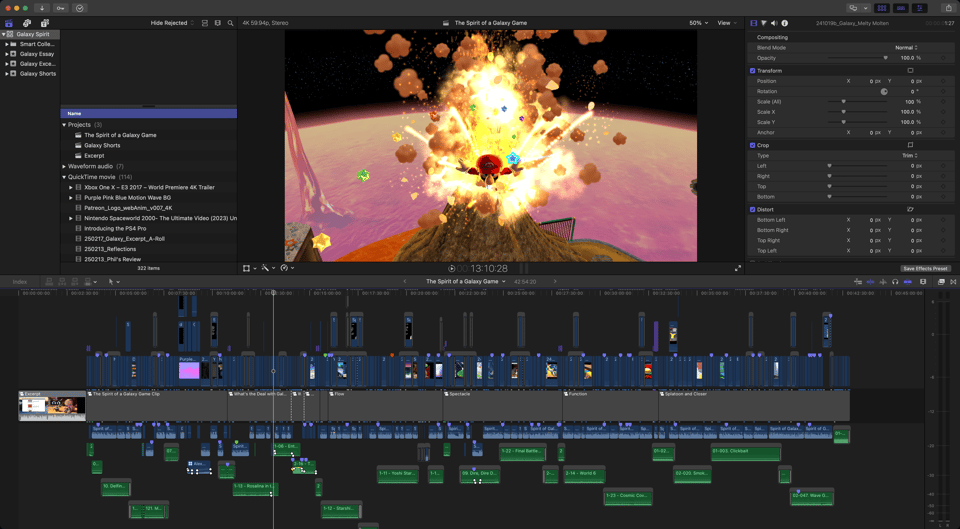
Lesson number one from the editing process—DO FEWER MONTAGES MAX.
I love a good montage. I think I made some killer ones in this essay. But man, do they take a lot of effort. It's good effort and the payoff is satisfying, but maybe just don't have like six of them? Most of this is from my writing where it is so easy to write out a list, imagine said list in action, and make that list longer than it needs to be in video form, but it works well in written form. See? The pace of reading a list and seeing a list is practically the tortoise and the hare. Realizing this on the timeline led to cutting back some visual examples that match what I am talking about, but it helped the presentation of it all. I still love my Galaxy 2 montage. So much. Like, I just watched it again as I typed this because I wanted to link directly to it. I love it and I hope you do too.
Like I mentioned above, I was big on quotes this time around. I needed some visual diversity so I came up with three distinct methods for displaying them this time around. For Philip's quotes out of 202X, since I wasn't satisfied with the shots of the book I got, I opted for a screen recording on his website. I started using Screen Studio last year and have enjoyed using it as my primary screen recording tool. It tracks your mouse and clicks and then automatically zooms in to make snappy, dynamic videos. I felt like this spiced up a simple concept like a static screen clip just enough. I tried highlighting the text in time with my narration and I think the flubs in precision gave the scene a tangible feel.
The essay had natural breaks, thanks to each game or design principle being its own stand alone point. I wanted to accentuate that with chapter cards. I did that in Chasing the Stick: The History of Naughty Dog during the PS4 Era for each game, but those were static. So, completely inspired by my new essay pal mark haha and his wonderful deep dive on Mario Party 9. Mark had chapter cards with subtle scenes from the game to give each chapter card a bit of life. I loved this implementation and headed straight for noclip.website and loaded up Rosalina's Observatory in Super Mario Galaxy. I was drawn to the domes that house the level hubs. They are picturesque against the starry sky and have little spurts of life around them with movement and Lumas occasionally floating nearby. I chose the Kitchen for its tiny puffs of smoke from the chimney. I also had to get a clip from Gusty Garden Galaxy with its iconic wind and flowers. My friend wizawhat recommended pairing the light scene of Gusty with a darker one and I agreed. Wiz actually recaptured those scenes for me on his PC, since the lads noticed some stutters in my test footage.
As for the Spaltoon 3 chapter card, I wanted to use footage from the game itself to bring the audience right back to the inspiration for the entire essay. Thankfully, the opening sequence of the campaign is packed with great material. I liked the two train shots because they seemed to indicate that the real train of the essay was rolling into the station and we were on our way to the destination. I went back and forth with myself on whether or not to change the font itself to a Splatoon variant. In the end, I stuck with the 3D World-style font I had been using. That felt like the right call. I did however notice something that bugged me in the scene onboard the train. There was a bounce to the passengers and the train itself. My quote of choice stood static and felt out of place. With a little tracking trickery, I mapped the quote to the Inkling's head and the shot felt 1,000,000,000 times better. I went a step further and locked the text to the train wall itself and the quote gently bopped with the big metal tube. To me, this subtle detail adds back so much more than it sounds on paper.
The third quote variant was just the static cards with pictures of the speaker. I think the next time I do quotes, I want to rally others to do VO to help break up my speaking and give each speaker a distinct voice. To add some variety, I had the thought to use a different photo of the speaker every time that I quoted them. This turned out to be harder the more I used a particular speaker, like Yoshiaki Koizumi. Check Google Images and maybe count how many you need before committing to a bit like that.
Ya boy did a whole lot of masking in this video too. It all started with that Uncharted 4 clip. To make the gag work well, I needed to mask out Drake and his boat so that the U.S.S. New Mario Bros. could sail in from the background before crashing. Final Cut Pro 11 brought in this Magic Masking tool that got close to masking out Nate etc., but I still had to go in manually and polish up the mask. This took over an hour? My whole session was consumed by the mask. This became a theme.
Because U.S.S. New Mario Bros. was not the only thing that got the good ol' mask treatment. There's a clip in the Splatoon 3 section where I use the Anarchy Splatcast as set dressing for explaining the gist of the game. I felt this was more interesting without being too distracting. The issue was that the clips of the Splatcast were a smidge too short for my VO. The transition in-game would come in and show mere frames of the following scene. I had the genius idea to mask the in-game transition and use it as a transition for my own video. The timing would be perfect. It was just very tedious to do mask frame by frame, especially when there are 60 of them per second.
In the closing section, I used a few simpler masks: One inside the Outer Wilds bit to showcase a death screen in Hades. I thought this exemplified the "loops upon loops upon loops" statement in a clever nod sort of way.10 At the very end, I used footage of the final scene in Super Mario Galaxy 2 to emphasize "joy" (and because it features Lubba). The cutscenes in this game are framed inside a storybook. I wanted the smiling leap and the stellar send off together, but there was some dialogue and whatnot between those two scenes. So once again using the in-game transition, I just masked out the scene as the page turned and inserted the moment I wanted instead.
This whole masking push was a good lesson in technique and patience. I think each mask enhanced the essay in some way without being obtrusive. Each offered a subtle enhancement. Sure, it was the definition of tedium, but how else am I supposed to build up my skills? I'm kind of excited to mask more in the future.
While not editing per se, the proofing process was as vital as ever. Major errors were caught, like missing opening VO, that train-tracked quote not being train-tracked, and a typo in the credits. The frustrating part was that my rush to get the video exported led to four exports, because I lacked the patience to fully proof.
My process is inspired by Maddy Myers from an exchange I recall on Kotaku Splitsceen, before her and her hosts left to start Triple Click. She is a musician and she talked about when she's listening to "final" mixes, she listens on regular consumer headphones or earbuds (I forget that detail). That stuck with me though and makes sense. When I watch YouTube videos or essays, 90% of the time, I am watching and listening on my phone, out loud. I'm not sitting at my iMac with my headphones on like I am when making a video.
My flow is the export the video once (so I don't have to deal with stutter-y rendering), watch it on my iMac, upload that to YouTube should it pass, and then watch the unlisted version on YouTube; once on my TV and once on my phone. Now, I should write down all the mistakes I catch in those two YouTube passes and then implement fixes. Instead, I caught the missing VO right and the start and rushed out to my office to fix it and kick off a new export...only to then later be told about the train-tracked goof. This was after a re-export to fix that credits typo.
I did this to myself and caused a much higher use of resources and time. There was no reason to implement corrections in "real" time. Next time, I need to proof it in full and then fix my mistakes.
The Thumbnail
I knew from the outset that I wanted a thumbnail with Mario blasting across the sky in his stylish Galaxy way. It dawn on me that Inklings also launch themselves across the sky and I thought that'd be a neat way to fuse the two games into the thumbnail. I was captivated by the thumbnail of this video titled Harrison Ford Doesn't Care, which I haven't even watched, but I loved the outline effect. I wanted to do that.
The first thing I did was scour the official Splatoon 3 website and pluck assets. Got to love those Nintendo "Seal of Approval" assets. For some reason this did not occur to me for Super Mario Galaxy until wizawhat showed me one. Perhaps it was because I knew the game was almost 20-years-old and there wasn't really a website to scour in a meaningful way. Thank God for wiz, because he brought the quality of the Mario assets up significantly.
My first four versions were really more playing with the PNGs, fonts, and colors to get a fell for what will work. I really liked making the Inkling wrap around letters. That felt like a fun way to add depth to the image.
The next four introduced Mario and outer space. A big element I wanted to capture/implement, but couldn't do nearly as well as Nintendo was the trail of star dust behind Mario that is signature in Galaxy. That led me to toy with using ink as the trail instead to further meld the two IP. By version seven, I knew I needed more Splatoon in the image. Galaxy was too dominant. So I swapped the background of the blue skies of the Splatlands. But I needed more Inkling flair. I over indexed my art into the Squid Kid column by splatting ink around, swapping the Luma for an Inkling, and slapping duct tape over elements.
I won't lie, I think number 10 is my favorite. I love blocking out Mario's face with black tape. It felt like out with the old and in with the new. It felt like anarchy to the establishment of Nintendo. It felt very Splatoon, but it was too much. I got rid of the tape and added smiley face graffiti instead. I felt this balanced the two games extremely well, while presenting a simplified version of my core question. The only difference between the last two is the addition of a corner watermark for branding. I like this so much that I went back and added it to all my essay thumbnails. A little color-matching here, a little opacity there and we have a brand to the thumbnails that, I don't think, is obnoxious.
What I zeroed in on this go around with crafting this thumbnail was that the process is all about play. You have to throw pieces at the canvas and see what sticks. You can't know what is going to work the best until you get in there with your hands and make art. Your hands need to get covered in the proverbial digital ink. Because of all that play, I think this my best thumbnail to date.
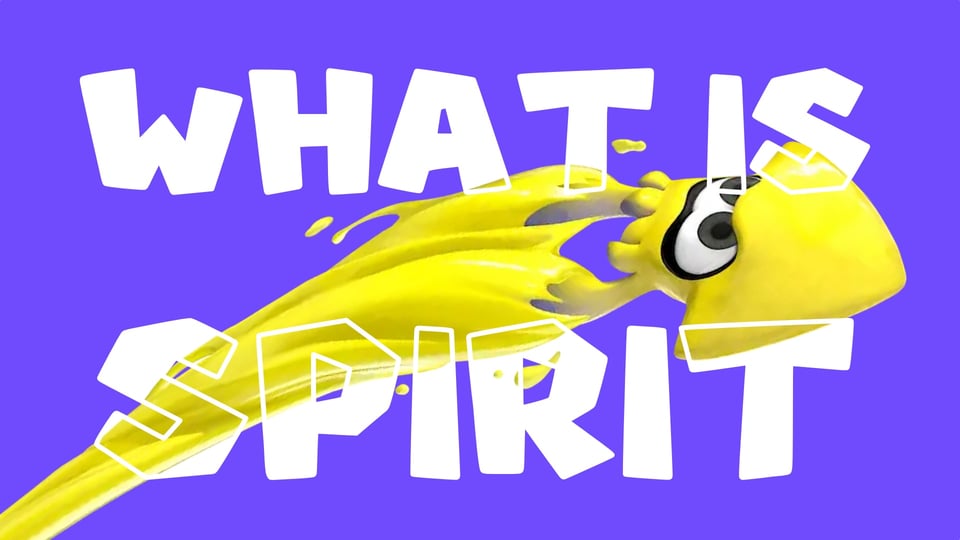
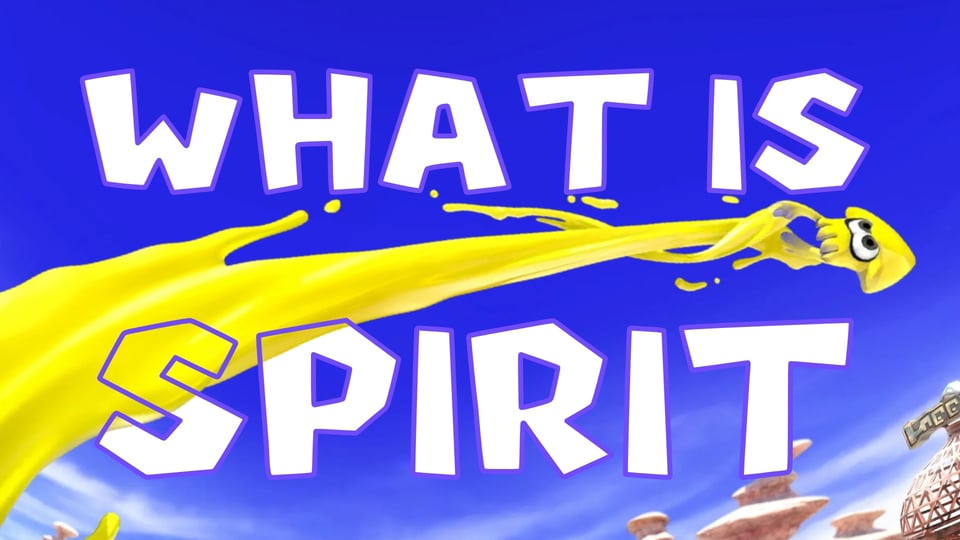
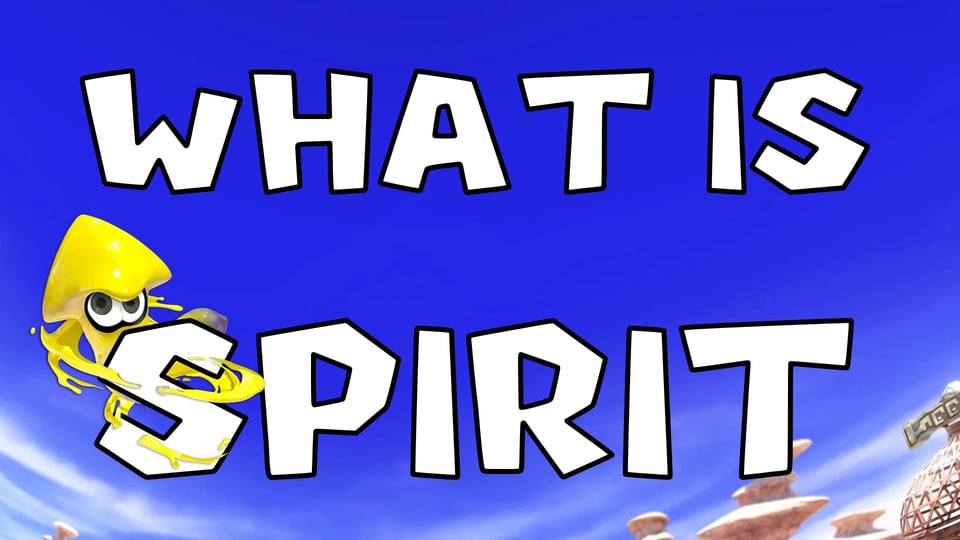
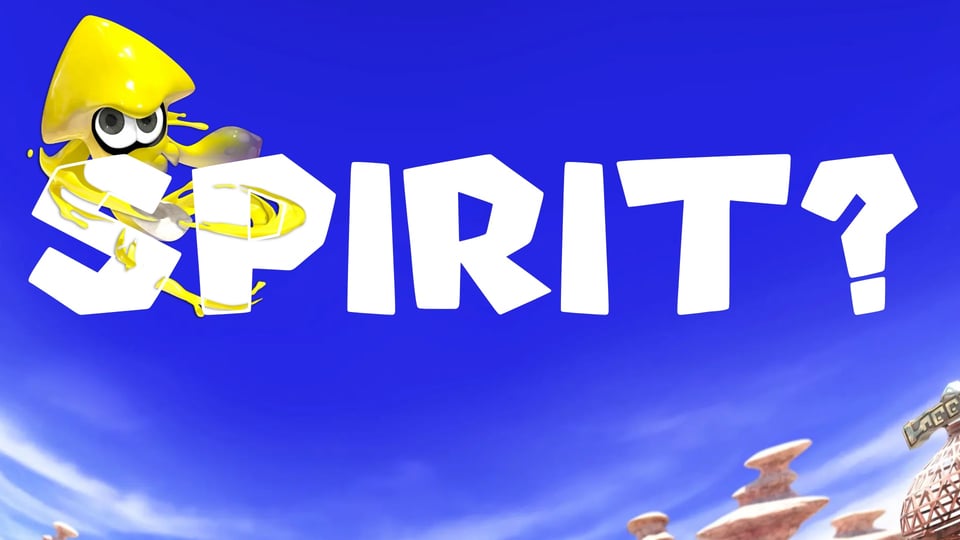
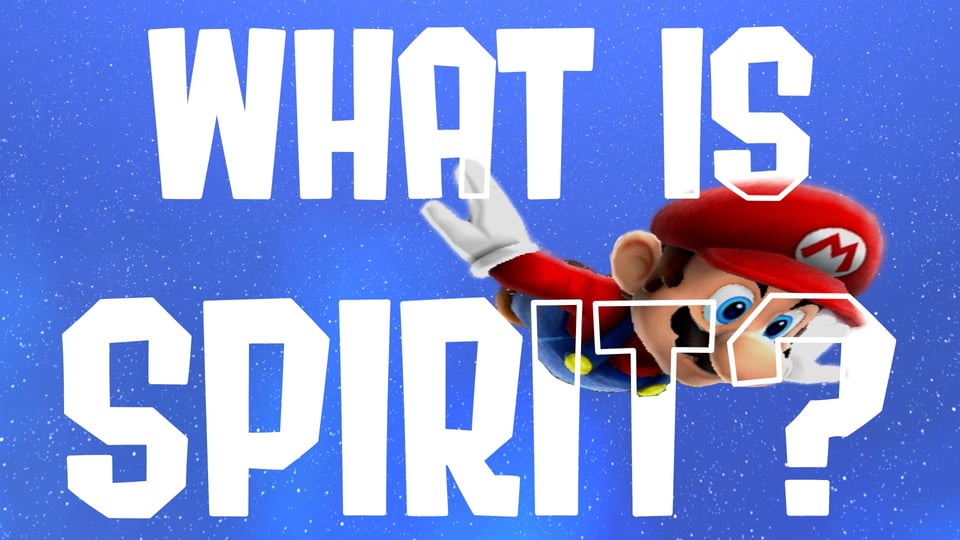
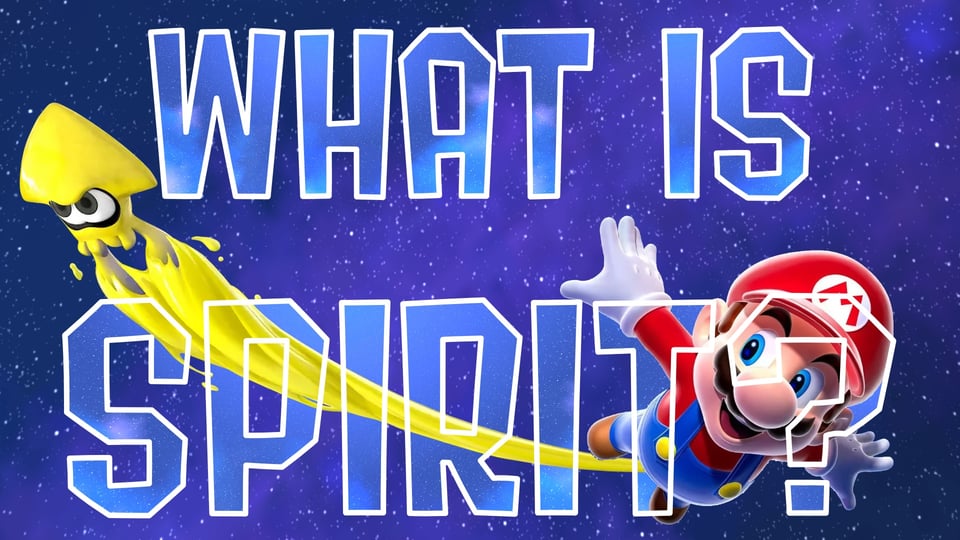
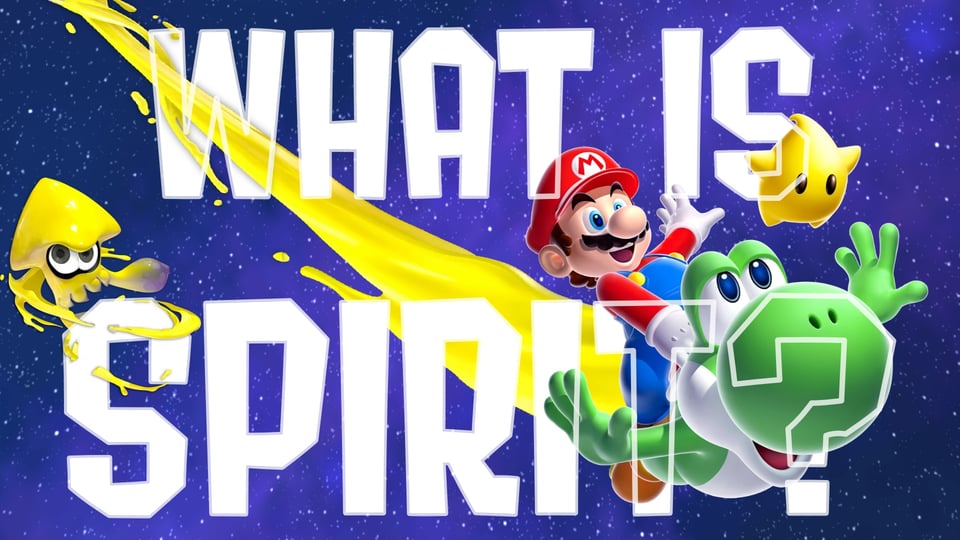
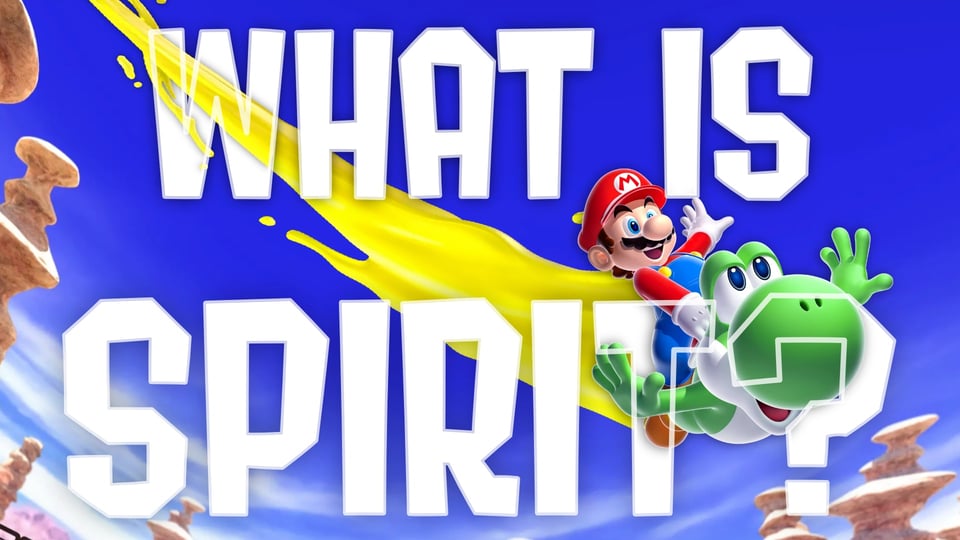
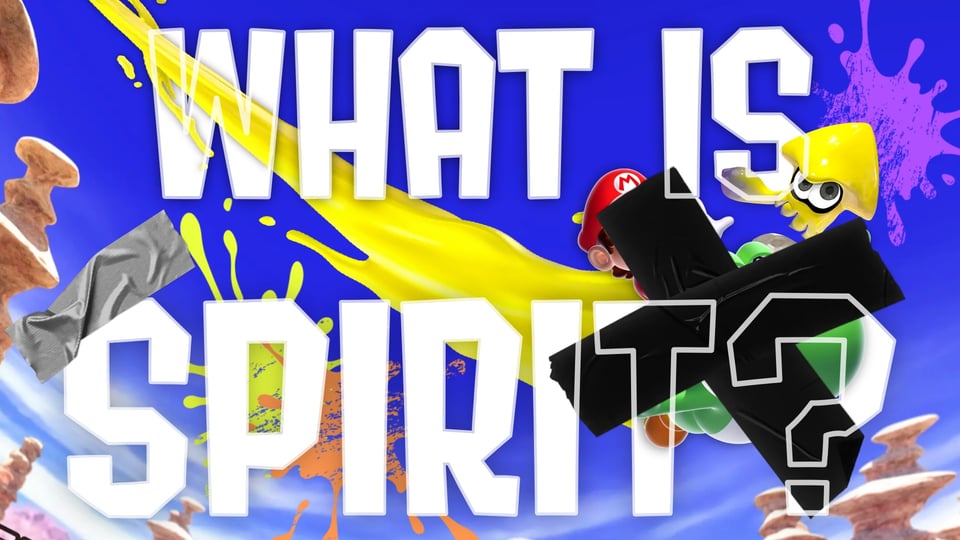
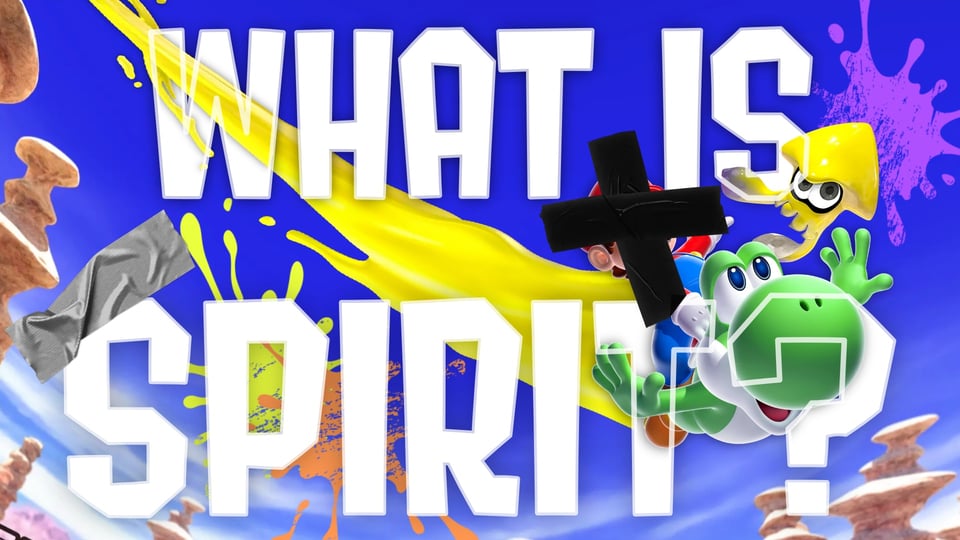
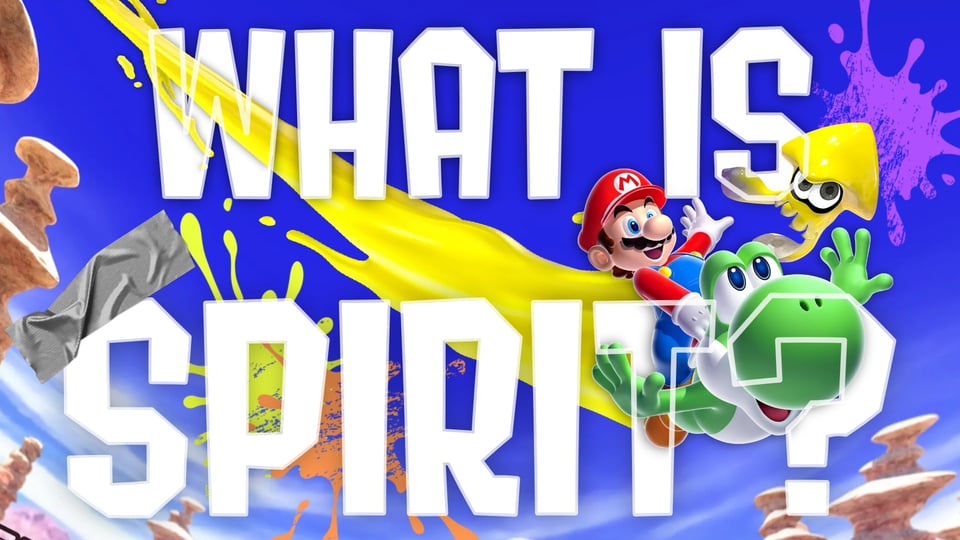
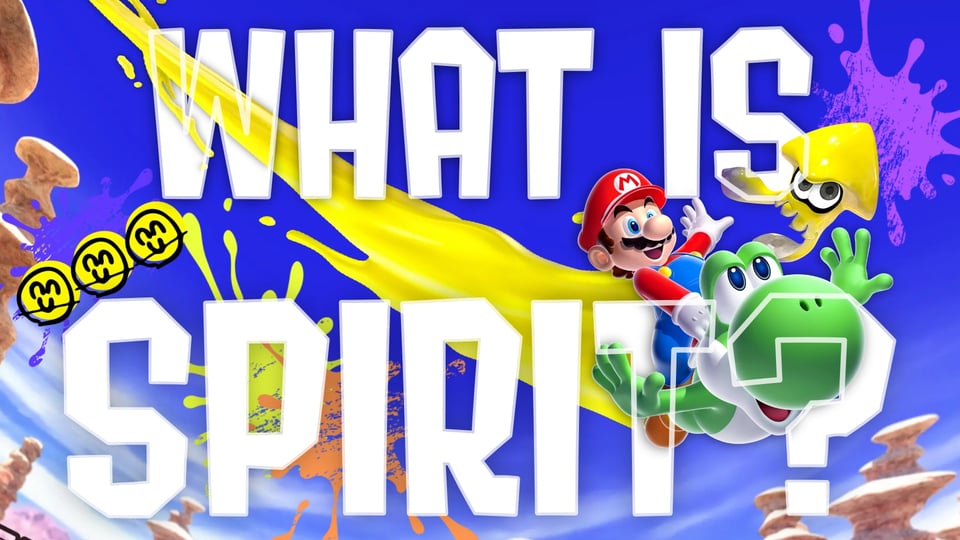
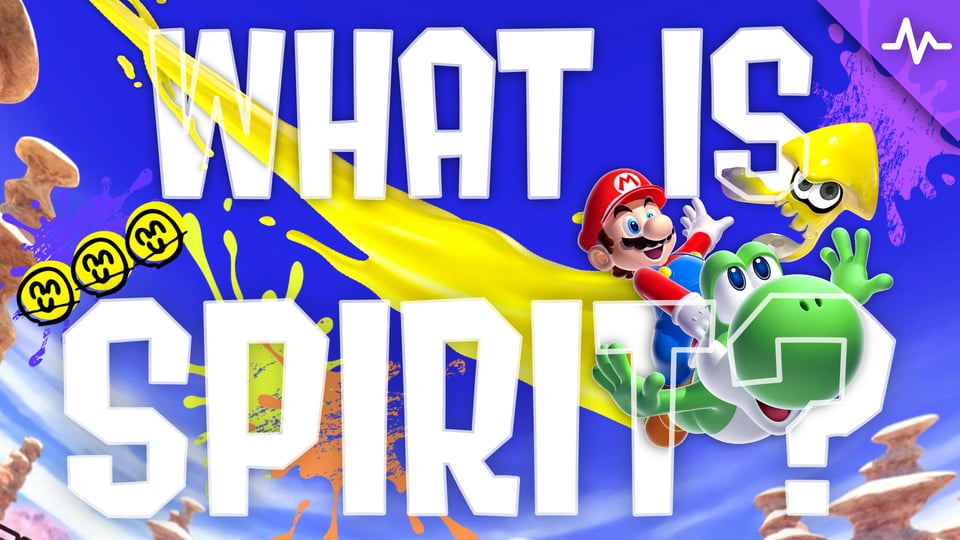
Response
Launching this essay on a brand spanking new channel has diminished its initial release. The overall response has been super positive though. Across all the versions (more below) there have been 9 comments, but the personal outreach from folks is infinitely more pleasurable. I knew the response out-of-the-gate would be much lower, but the quality of the response has been of the highest caliber.
I think this is a good foundation to build this new essay-only channel upon. The backlog is strong and I hope over time more people discover the older essays and enjoy them.
All of this is not to say that I didn't try to leverage my main channel in some way. I uploaded an excerpt of the opening sequence in hopes that it would motivate folks to click and watch the rest. This video received just over 300 views. I also uploaded two Shorts to just kind of play with. I extracted two scenes; one joke and the aforementioned Super Mario Galaxy 2 montage. The first garnered nearly 500 views and the montage went just above 500. This felt like an obvious move since the work itself was already done. I just had to reformat in a vertical manner. Seemed sort of like table stakes.
Performance / Stats
- Final essay file/folder size was 1.97 TB
- Final essay file/folder size (sans full playthroughs) was 283.35 GB
- Final video file size was 17.79 GB
- Final essay word count was 6,893
- Final behind-the-scenes word count was 6,578
-
After one week of being published,
- 189 views
- 109 unique views
- 1,882 impressions
- 31.3 watch hours
- 9+ subscribers
- 19 likes
- 0 dislikes
- 8 comments
In Closing
This video took a lot, but I think it gives a lot back. Sure, I'm biased, but I believe it nonetheless. It touched on every part of my creativity, enhancing both my process and myself. It's proof that long held ideas don't have to wither, but can burst forth and create something new. It was a reminder that inspiration comes from all sorts of places, but you have a duty to cultivate those spots and seek them out.
I also feel like these things need to be a bit shorter. 😅 My next few I am going to hone in that craft. Say more with less. Refine, refine, refine. You may, of course, watch me journey down that path in real-ish time by subscribing to my newsletter Memory Card. I hope you check it out.
Thank you all for watching and reading. I'll see you in the next one.
Until then...
Inspiration
-
202X: Video Game Reflections by Philip Summers
-
It is not lost on me that this rich writing time was back-to-back travel. All three linked newsletters were in a row. ↩
-
I was [[Being Interviewed by the Horse Browser Team|interviewed by the Horse Browser team]] last year because I was active in their Discord about my process with their app. They did not pay me or compensate me in any way for my time. I bought Horse with my own money. I did want to mention the interview for transparency's sake though. ↩
-
On my Mac with my trusty studio headphones, on my TV, and on my phone sans AirPods Pro. ↩
-
I wouldn't necessarily classify this as music, but more as an exploration of sounds and features on a piece of gear that makes very pretty sounds in the hands of people who know so much more than me. 😅 ↩
-
One serendipitous event was the discovery of more high quality Space World 2000 footage during the whole project. That helped diversify the shots and gave me more 25-year-old high quality footage, which is invaluable to a 4K sicko like me. ↩
-
Of course off a real NES with composite cables and oh my goodness. The warmth and clarity. This is just a tube I grabbed for free at a thrift shop. Games looked good back then. Also, I happened to leave my NES running all afternoon and night...whoops. ↩
-
It could be a switch of resolution or dropped frames flagging the 4K60S+ that there is a problem. It's a finicky card, but it's the only thing that I own that can handle capture at 4K60 HDR. Possibly my TINK-4K has a bug in the firmware I am running. I haven't updated in a bit. It seems to be difficult to replicate consistently, which makes troubleshooting trickier. ↩
-
Okay, I hope the HDR part of that equation doesn't make the Mac break a sweat. Ya boy is gonna ball out on his next Mac. And that means it will be a long while before I get one. My M1 iMac is going on four years old, which is both ancient and not that old. The real holdback is the M1. I was impatient. Should have waited for the Pro and Max chips... ↩
-
This would have taken me two seconds on the Wii U with Super Mario Maker, but I don't own that one anymore...😢. Maybe the GamePad was a good idea... ↩
-
Another montage that had visuals cut for timing. Fewer montages Max! ↩
